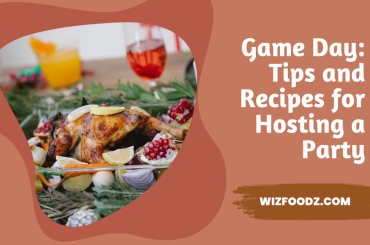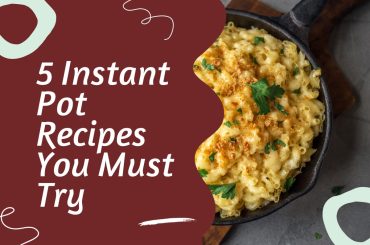Shrimp are one of the most beloved and popular seafood options around the world. Their sweet, succulent meat makes them an incredibly versatile ingredient that can be prepared in endless ways – from shrimp cocktails and scampi to coconut shrimp and shrimp burgers. However, cooking shrimp can also be tricky. Their delicate texture means they can quickly go from perfectly cooked to overdone and rubbery. Avoiding common mistakes when handling, prepping, and cooking shrimp is important in getting tender, juicy, sweet shrimp every time.
Below are the most common mistakes people make when cooking shrimp; read on so you can avoid them and achieve shrimp perfection.
1. Buying the Wrong Shrimp
When buying shrimp, there are a few key things to consider:
- Wild vs. Farmed – Wild-caught shrimp generally have better flavor and texture than farm-raised. However, they are also more expensive. Consider when you will be using the shrimp and whether the difference in price is worth it. For example, it may be worth splurging on wild shrimp for shrimp cocktail where their natural sweetness really shines through, but it is less important for a heavily seasoned shrimp stir fry.
- Size – Shrimp are categorized by size using a count per pound. For example, “21/25” means there will be 21-25 shrimp in a pound. Larger shrimp are ideal for grilling whole, while smaller shrimp work well chopped up in dishes like shrimp cakes. If you’re planning to make grilled shrimp skewers, opt for medium to large-sized shrimp for the best results. This way, they will remain juicy when grilled and be easy to thread onto skewers.
- Freshness – For peak flavor and texture, buy shrimp as fresh as possible and use it within a day or two. At the store, look for firm, shiny shells and avoid any with an ammonia-like odor.
2. Improperly Thawing
Never thaw shrimp in hot water or the microwave, as the sudden heat can start cooking them and make them rubbery. The best way to safely thaw shrimp is to plan ahead and thaw them overnight in the refrigerator. Place the frozen shrimp in a colander or strainer set over a bowl to catch any drips as they thaw.
If you need to thaw them more quickly, seal the shrimp in an airtight bag and submerge them in a large bowl of cold water. Be sure to change out the water every 30 minutes, so it stays cold. The shrimp will thaw within 1-2 hours using this method. Avoid letting them sit out at room temperature, as bacteria can multiply rapidly in the “danger zone” between 40-140°F.
3. Overcooking
It’s very easy to overcook shrimp since they cook so fast, going from perfectly done to rubbery and dry in mere minutes. Keep a close eye on them and watch for visual signs they are ready. The shrimp will change from a translucent gray color to an opaque pink/white when they are cooked through fully.
Also, check their shape – properly cooked shrimp will curl into a “C” shape, while overcooked shrimp curl into a tight “O” shape. As soon as the shrimp become opaque and form a “C,” remove them from the heat immediately. It’s better to slightly undercook them rather than overdo it. You can always put them back on the heat for another 30 seconds or so if needed. But there’s no saving overcooked, rubbery shrimp!
4. Underseasoning
Shrimp have a very subtle, sweet flavor that can get lost or seem bland if they aren’t seasoned properly. Be generous with salt, pepper, and spices like Old Bay or Cajun seasoning. Letting the shrimp marinate for 15-30 minutes before cooking allows the seasonings to penetrate the meat fully.
You can also boost flavor by cooking shrimp in a flavorful fat like olive oil, butter, or bacon grease. The richness complements the delicate shrimp. Splash the shrimp with fresh lemon juice or vinegar right when they come off the heat – the bright acidity really makes their sweetness pop. Don’t be shy with seasoning and flavorings!
5. Not Deveining
The dark vein along the back of a shrimp is its digestive tract. It can be removed before cooking in a process called deveining. While leaving the vein in isn’t unsafe, deveining improves both flavor and appearance. Use a sharp paring knife or specialized deveining tool to slice along the back and remove the vein.
For convenience, you can also ask your fishmonger to devein them for you when buying. Deveining prevents the occasional gritty bite and lets the sweet shrimp flavor shine through.
6. Overcrowding the Pan
It’s tempting to cook a big batch of shrimp all at once in the pan, but overcrowding leads to steaming instead of browning. The shrimp will end up soggy and pale instead of nicely seared.
Give them plenty of space in the pan so they can caramelize and brown. Work in batches if needed to avoid overcrowding. Let the first batch cook undisturbed for 1-2 minutes before stirring or flipping. Good browning adds tons of flavor.
If reheating pre-cooked shrimp, again, avoid crowding the pan. Reheat in batches for the best texture.
7. Skipping an Acid
Brightening shrimp with an acid like lemon juice or vinegar boosts flavor. The tangy acidity balances the sweetness of the shrimp.
Always finish shrimp off the heat with a squeeze of lemon or lime juice, a splash of white wine vinegar or rice vinegar, or a drizzle of hot sauce like Tabasco. The acid will liven up the flavor. For a change of pace, finish with citrus like orange or grapefruit instead of lemon.
8. Discarding the Shells
It’s easy to discard shrimp shells, but they have great flavor when used to make stock. Save shells and heads in a bag in the freezer until you have enough for stock.
Simmer the shells in water with aromatics like onion, celery, garlic, and peppercorns for an hour or two to extract their essence. Strain and use the richly flavored broth for seafood risottos, gumbos, chowders, or paella.
You can also roast the shells until crispy as a crunchy, briny garnish for seafood dishes or salads. Don’t throw away these flavor powerhouses!
Conclusion
Avoiding common cooking mistakes helps lead to tender, juicy, flavorful shrimp every time. Buy high-quality, fresh shrimp, be careful not to overcook, and use shells and heads to impart bonus flavor. With these tips, you’ll turn out fantastic shrimp dishes your family and friends will love.





